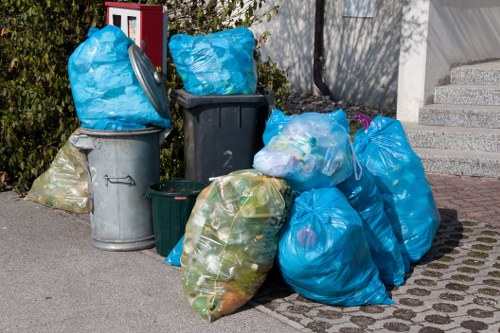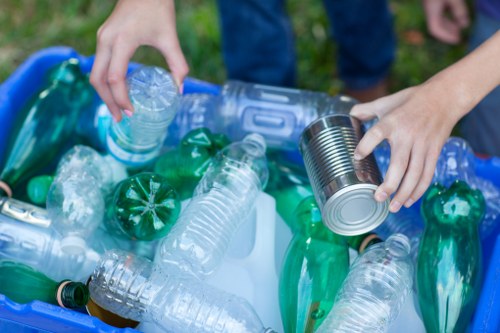Bed Disposal in Recycled London: A Comprehensive Guide
Understanding Bed Disposal

Disposing of a bed might seem straightforward, but it involves several steps to ensure it’s done responsibly and sustainably. In London, where space is often limited and environmental concerns are paramount, knowing the right methods for bed disposal is essential.
Whether you’re upgrading your bedroom furniture, relocating, or simply decluttering, proper bed disposal helps reduce waste and promotes recycling efforts. This guide will walk you through the various options available for disposing of your bed in Recycled London.
From understanding local regulations to exploring recycling centers and donation options, we’ll cover everything you need to make an informed decision. Let’s dive into the best practices for bed disposal in London.
Why Proper Bed Disposal Matters

Proper bed disposal is crucial for several reasons. Firstly, it helps in reducing landfill waste, which is a significant environmental concern. Beds are bulky items that take up a lot of space, and improperly disposed of furniture contributes to the growing waste problem.
Secondly, many parts of a bed, such as metal frames and wooden slats, can be recycled or repurposed. By disposing of your bed correctly, you ensure that these materials don’t go to waste and can be used in new products.
Lastly, responsible disposal practices support London’s sustainability goals. The city is committed to reducing its carbon footprint and promoting recycling. By following proper disposal methods, you contribute to these environmental efforts.
Local Regulations for Bed Disposal

Before disposing of your bed, it’s important to understand the local regulations in London. Different boroughs may have specific rules regarding furniture disposal, so it’s essential to familiarize yourself with these guidelines to avoid any fines or penalties.
Generally, London’s waste management policies encourage recycling and responsible disposal. You can contact your local council to get detailed information about the disposal process, collection schedules, and any associated costs.
Many councils offer bulky waste collection services, where large items like beds can be picked up from your property. However, scheduling and eligibility may vary, so it’s advisable to check the specific requirements of your borough.
Recycling Centers in London

Recycling centers play a pivotal role in the bed disposal process. These facilities are equipped to handle large furniture items and ensure that they are broken down into recyclable components.
When you bring your bed to a recycling center, various parts will be sorted and processed. For instance, metal parts can be melted down and reused, while wooden components can be repurposed for other construction projects.
Recycling centers also help in minimizing waste by ensuring that as much of the bed as possible is recycled rather than sent to landfill. This process not only benefits the environment but also supports the circular economy by giving old materials new life.
Donation Options

If your bed is still in good condition, donating it is a fantastic option. Numerous charities and organizations in London accept used furniture, including beds, and provide them to those in need.
Donating your bed not only helps someone else but also reduces waste. It’s a sustainable alternative to disposal that aligns with the principles of reusing and recycling.
Before donating, ensure that the bed is clean and in good repair. Contact the charity or organization in advance to arrange for pickup or drop-off, and confirm any specific requirements they may have.
Eco-Friendly Disposal Methods

Adopting eco-friendly disposal methods ensures that your bed disposal process aligns with sustainable practices. Here are some tips to make your disposal more environmentally friendly:
- Disassemble the Bed: Break down the bed into smaller parts to make it easier to transport and recycle.
- Sort Materials: Separate different materials like metal, wood, and fabric to facilitate efficient recycling.
- Use Reusable Packaging: If possible, use reusable containers or bags when transporting your bed to a recycling center.
- Opt for Local Services: Choose local recycling or donation services to minimize transportation emissions.
Hiring Professional Disposal Services
For those who prefer a hassle-free bed disposal experience, hiring professional disposal services is a great option. These companies specialize in removing large furniture items and ensure that they are disposed of responsibly.
Professional services typically handle the entire process, from disassembling the bed to transporting it to recycling centers or donation facilities. They also ensure compliance with local regulations, saving you time and effort.
When selecting a disposal service, consider factors such as pricing, reputation, and environmental practices. Opt for companies that prioritize sustainability and have a track record of responsible disposal.
Steps to Dispose of Your Bed Responsibly
Disposing of your bed responsibly involves several key steps. Follow this guide to ensure an eco-friendly and efficient disposal process:
- Assess the Bed’s Condition: Determine if the bed is still usable or needs repairs before disposal.
- Decide on Disposal Method: Choose between recycling, donation, or hiring a professional service based on the bed’s condition.
- Contact Local Authorities: Reach out to your local council for information on bulky waste collection or recycling centers.
- Prepare the Bed for Disposal: Disassemble the bed if necessary and sort the materials for recycling.
- Arrange Transportation: Whether you’re taking the bed to a recycling center or scheduling a pickup, ensure it’s transported safely.
- Complete the Disposal: Follow through with the chosen method, ensuring all materials are handled appropriately.
Benefits of Recycling Your Bed
Recycling your bed offers numerous benefits, both for the environment and your community. Here are some of the key advantages:
- Environmental Preservation: Recycling reduces the need for raw materials, conserving natural resources and reducing deforestation.
- Energy Conservation: Recycling materials like metal and wood requires less energy compared to producing them from scratch.
- Waste Reduction: By recycling, you help decrease the volume of waste that ends up in landfills, prolonging their lifespan.
- Economic Benefits: Recycling can create jobs and stimulate the economy by supporting industries involved in material processing and manufacturing.
Common Challenges in Bed Disposal
While disposing of a bed responsibly is achievable, there are common challenges that you might encounter:
- Size and Weight: Beds are bulky and heavy, making transportation and handling difficult without proper assistance.
- Material Separation: Properly sorting materials for recycling can be time-consuming and requires effort.
- Regulatory Compliance: Navigating local disposal regulations can be complex, especially if you’re unfamiliar with the processes.
- Finding Suitable Recycling Centers: Not all recycling centers accept furniture, so locating an appropriate facility may require research.
Despite these challenges, planning ahead and utilizing available resources can streamline the bed disposal process.
Innovative Bed Recycling Initiatives in London
London is home to several innovative initiatives aimed at improving bed disposal and recycling. These programs focus on maximizing material recovery and minimizing environmental impact.
One such initiative is the London Furniture Recycling Scheme, which partners with local businesses and communities to collect and repurpose old furniture. Through this scheme, beds are dismantled, and their components are either recycled or donated to those in need.
Additionally, some startups in London are developing creative solutions to extend the lifecycle of furniture. For example, modular bed designs allow for easy disassembly and recycling, reducing waste and promoting sustainability.
How to Choose the Right Disposal Option
Selecting the right bed disposal option depends on several factors, including the bed’s condition, your budget, and your environmental priorities. Here are some considerations to help you make the best choice:
- Bed Condition: If the bed is in good condition, donation or resale might be the best option. For damaged beds, recycling or professional disposal may be more appropriate.
- Cost: Determine your budget for disposal. Some methods, like professional services, may incur costs, while others like donation or recycling are often free.
- Convenience: Consider how much effort you’re willing to invest. Professional services offer a convenient solution, whereas recycling or donation might require more time and effort on your part.
- Environmental Impact: If sustainability is a priority, opting for recycling or donation ensures that your bed contributes to environmental conservation.
Preparing Your Bed for Disposal
Proper preparation is key to ensuring an efficient disposal process. Follow these steps to prepare your bed for disposal:
- Clean the Bed: Remove all bedding, pillows, and any other items. Clean the bed to make it presentable if you plan to donate it.
- Disassemble the Bed: Take apart the bed frame, headboard, footboard, and any other components. This makes transportation easier and facilitates recycling.
- Sort Materials: Separate metal parts from wood and other materials. This helps recycling centers process each material appropriately.
- Remove Upholstery: If your bed has upholstery, remove it and decide whether the fabric can be recycled or needs to be disposed of separately.
- Check for Hazards: Ensure that there are no hazardous materials, such as lead paint or treated wood, which might require special handling.
Environmental Impact of Improper Bed Disposal
Improper bed disposal can have severe environmental consequences. When beds end up in landfills, they contribute to the growing waste problem, depleting landfill space and potentially releasing harmful substances into the environment.
Materials like metal and wood can take years to decompose, and in the process, they may leach toxins into the soil and groundwater. Additionally, the production of new materials to replace those lost to waste requires significant energy and resources, exacerbating the environmental footprint.
By disposing of your bed responsibly, you help mitigate these negative impacts and support a more sustainable future for London.
Success Stories: Effective Bed Disposal in London
Many London residents have successfully navigated bed disposal, setting positive examples for others to follow. These success stories highlight the effectiveness of recycling, donation, and professional disposal methods.
For instance, a local family recently upgraded their bedroom by donating their old bed through a charity. The bed was then refurbished and provided to a family in need, demonstrating the power of community support and sustainable practices.
Another example involves a small business that partnered with a recycling center to dispose of old office furniture, including beds from the staff lounge. This initiative not only reduced waste but also promoted the company’s commitment to environmental responsibility.
Future Trends in Bed Disposal and Recycling
The landscape of bed disposal and recycling is evolving, with several trends shaping the future of this essential service in London:
- Increased Automation: Advances in recycling technology are making the process more efficient, allowing for better separation and processing of materials.
- Circular Economy Models: Emphasizing the reuse and recycling of materials to create a closed-loop system, reducing the need for new resources.
- Sustainable Design: Manufacturers are designing beds with recyclability in mind, using materials that are easier to recycle and extend the product lifecycle.
- Community Initiatives: Local communities are organizing more donation drives and recycling events to facilitate responsible bed disposal.
- Green Certifications: Disposal services are seeking green certifications to demonstrate their commitment to environmentally friendly practices.
Tips for Maintaining a Sustainable Home
Proper bed disposal is just one aspect of maintaining a sustainable home. Incorporating other eco-friendly practices can further reduce your environmental impact:
- Choose Sustainable Materials: Opt for furniture made from renewable or recycled materials.
- Practice Minimalism: Reduce clutter by keeping only essential items and investing in quality over quantity.
- Energy Efficiency: Use energy-efficient lighting and appliances to lower your household’s carbon footprint.
- Waste Segregation: Separate recyclables from general waste to facilitate effective recycling.
- Water Conservation: Implement water-saving techniques, such as using low-flow fixtures and mindful water usage.
Conclusion: Embracing Responsible Bed Disposal
Responsible bed disposal in Recycled London is a vital component of sustainable living. By understanding the various disposal methods, adhering to local regulations, and choosing eco-friendly options, you contribute to a cleaner, greener city.
Whether you decide to recycle, donate, or hire professional disposal services, each action plays a part in reducing waste and promoting environmental conservation. Remember to assess your bed’s condition, prepare it properly, and select the disposal method that best aligns with your values and needs.
Take the first step towards responsible bed disposal today. Contact us today to learn more about your options and make a positive impact on the environment.
Frequently Asked Questions
To further assist you, here are some common questions about bed disposal in London:
- How much does bed disposal cost in London?
The cost varies depending on the disposal method. Professional services may charge a fee based on the bed’s size and complexity, while recycling centers might offer free disposal for certain materials. Donating your bed is typically free, but some organizations might request a small donation.
- Can I dispose of my bed myself?
Yes, you can dispose of your bed yourself by taking it to a recycling center or arranging a bulky waste pickup with your local council. However, considering the bed’s size and weight, you might find it challenging without assistance.
- What materials can be recycled from a bed?
Commonly recycled materials from a bed include metal frames, wooden slats, and plastic components. Fabric and upholstery may also be recyclable, depending on the material and local recycling facilities.
- Are there any beds that cannot be recycled?
Most bed components can be recycled, but some pieces with hazardous materials or extensive damage might not be suitable for recycling. It’s best to consult with a recycling center to determine the recyclability of your bed.
- How do I find a reputable bed disposal service in London?
Research online for reviews and recommendations, check local directories, and ensure the service complies with London’s recycling regulations. You can also ask for referrals from friends or family members who have used disposal services.
By addressing these questions, we aim to simplify your bed disposal process and encourage responsible environmental practices.
Get Started with Your Bed Disposal Today
Don’t let an old bed clutter your space or harm the environment. Embrace responsible disposal methods and contribute to London’s recycling efforts. Whether you choose to recycle, donate, or hire a professional service, your actions make a difference.
Ready to dispose of your bed responsibly? Book your service now and take a step towards a more sustainable and organized home.